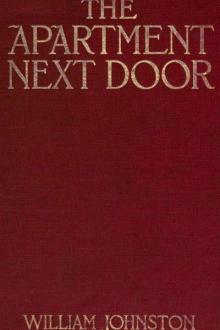The Fifteen Decisive Battles of the World from Marathon to Waterloo by Edward Creasy (reading books for 6 year olds txt) 📕

- Author: Edward Creasy
- Performer: -
Book online «The Fifteen Decisive Battles of the World from Marathon to Waterloo by Edward Creasy (reading books for 6 year olds txt) 📕». Author Edward Creasy
Napoleon had stationed himself during the battle on a little hillock near La Belle Alliance, in the centre of the French position. Here he was seated, with a large table from the neighbouring farm-house before him, on which maps and plans were spread; and thence with his telescope he surveyed the various points of the field. Soult watched his orders close at his left hand, and his staff was grouped on horseback a few paces in the rear. [“Souvenirs Militaires,” par Col, Lemonnier-Delafosse, p.
407. “Ouvrard, who attended Napoleon as chief commissary of the French army on that occasion, told me that Napoleon was suffering from a complaint which made it very painful for him to ride.”
—Lord Ellesmere, p. 47.] Here he remained till near the close of the day, preserving the appearance at least of calmness, except some expressions of irritation which escaped him, when Ney’s attack on the British left centre was defeated. But now that the crisis of the battle was evidently approaching, he mounted a white Persian charger, which he rode in action because the troops easily recognised him by the horse colour. He had still the means of effecting a retreat. His Old Guard had yet taken no part in the action. Under cover of it, he might have withdrawn his shattered forces and retired upon the French frontier. But this would only have given the English and Prussians the opportunity of completing their junction; and he knew that other armies were fast coming up to aid them in a march upon Paris, if he should succeed in avoiding an encounter with them, and retreating upon the capital. A victory at Waterloo was his only alternative from utter ruin, and he determined to employ his Guard in one bold stroke more to make that victory his own.
Between seven and eight o’clock, the infantry of the Old Guard was formed into two columns, on the declivity near La Belle Alliance. Ney was placed at their head. Napoleon himself rode forward to a spot by which his veterans were to pass; and, as they approached, he raised his arm, and pointed to the position of the Allies, as if to tell them that their path lay there.
They answered with loud cries of “Vive l’Empereur!” and descended the hill from their own side, into that “valley of the shadow of death” while the batteries thundered with redoubled vigour over their heads upon the British line. The line of march of the columns of the Guard was directed between Hougoumont and La Haye Sainte, against the British right centre; and at the same time the French under Donzelot, who had possession of La Haye Sainte, commenced a fierce attack upon the British centre, a little more to its left. This part of the battle has drawn less attention than the celebrated attack of the Old Guard; but it formed the most perilous crisis for the allied army; and if the Young Guard had been there to support Donzelot, instead of being engaged with the Prussians at Planchenoit, the consequences to the Allies in that part of the field must have been most serious.
The French tirailleurs, who were posted in clouds in La Haye Sainte, and the sheltered spots near it, picked off the artillerymen of the English batteries near them: and taking advantage of the disabled state of the English guns, the French brought some field-pieces up to La Haye Sainte, and commenced firing grape from them on the infantry of the Allies, at a distance of not more than a hundred paces. The allied infantry here consisted of some German brigades, who were formed in squares, as it was believed that Donzelot had cavalry ready behind La Haye Sainte to charge them with, if they left that order of formation. In this state the Germans remained for some time with heroic fortitude, though the grape-shot was tearing gaps in their ranks and the side of one square was literally blown away by one tremendous volley which the French gunners poured into it. The Prince of Orange in vain endeavoured to lead some Nassau troops to the aid of the brave Germans. The Nassauers would not or could not face the French; and some battalions of Brunswickers, whom the Duke of Wellington had ordered up as a reinforcement, at first fell back, until the Duke in person rallied them, and led them on. Having thus barred the farther advance of Donzelot, the Duke galloped off to the right to head his men who were exposed to the attack of the Imperial Guard. He had saved one part of his centre from being routed; but the French had gained ground and kept it; and the pressure on the allied line in front of La Haye Sainte was fearfully severe, until it was relieved by the decisive success which the British in the right centre achieved over the columns of the Guard.
The British troops on the crest of that part of the position, which the first column of Napoleon’s Guards assailed, were Maitland’s brigade of British Guards, having Adams’s brigade (which had been brought forward during the action) on their right. Maitland’s men were lying down, in order to avoid as far as possible the destructive effect of the French artillery, which kept up an unremitting fire from the opposite heights, until the first column of the Imperial Guard had advanced so far up the slope towards the British position, that any further firing of the French artillerymen would have endangered their own comrades.
Meanwhile the British guns were not idle; but shot and shell ploughed fast through the ranks of the stately array of veterans that still moved imposingly on. Several of the French superior officers were at its head. Ney’s horse was shot under him, but he still led the way on foot, sword in hand. The front of the massive column now was on the ridge of the hill. To their surprise they saw no troops before them. All they could discern through the smoke was a small band of mounted officers. One of them was the Duke himself. The French advanced to about fifty yards from where the British Guards were lying down when the voice of one of the group of British officers was heard calling, as if to the ground before him, “Up, Guards, and at them!” It was the Duke who gave the order; and at the words, as if by magic, up started before them a line of the British Guards four deep, and in the most compact and perfect order. They poured an instantaneous volley upon the head of the French column, by which no less than three hundred of those chosen veterans are said to have fallen. The French officers rushed forwards; and, conspicuous in front of their men, attempted to deploy them into a more extended line, so as to enable them to reply with effect to the British fire. But Maitland’s brigade kept showering in volley after volley with deadly rapidity. The decimated column grew disordered in its vain efforts to expand itself into a more efficient formation. The right word was given at the right moment to the British for the bayonet-charge, and the brigade sprang forward with a loud cheer against their dismayed antagonists. In an instant the compact mass of the French spread out into a rabble, and they fled back down the hill, pursued by Maitland’s men, who, however, returned to their position in time to take part in the repulse of the second column of the Imperial Guard.
This column also advanced with great spirit and firmness under the cannonade which was opened on it; and passing by the eastern wall of Hougoumont, diverged slightly to the right as it moved up the slope towards the British position, so as to approach nearly the same spot where the first column had surmounted the height, and been defeated. This enabled the British regiments of Adams’s brigade to form a line parallel to the left flank of the French column; so that while the front of this column of French Guards had to encounter the cannonade of the British batteries, and the musketry of Maitlands Guards, its left flank was assailed with a destructive fire by a four-deep body of British infantry, extending all along it. In such a position all the bravery and skill of the French veterans were vain. The second column, like its predecessor, broke and fled, taking at first a lateral direction along the front of the British line towards the rear of La Haye Sainte, and so becoming blended with the divisions of French infantry, which under Donzelot had been assailing the Allies so formidably in that quarter. The sight of the Old Guard broken and in flight checked the ardour which Donzelot’s troops had hitherto displayed. They, too, began to waver. Adams’s victorious brigade was pressing after the flying Guard, and now cleared away the assailants of the allied centre. But the battle was not yet won. Napoleon had still some battalions in reserve near La Belle Alliance. He was rapidly rallying the remains of the first column of his Guards, and he had collected into one body the remnants of the various corps of cavalry, which had suffered so severely in the earlier part of the day. The Duke instantly formed the bold resolution of now himself becoming the assailant, and leading his successful though enfeebled army forward, while the disheartening effect of the repulse of the Imperial Guard on the rest of the French army was still strong, and before Napoleon and Ney could rally the beaten veterans themselves for another and a fiercer charge. As the close approach of the Prussians now completely protected the Duke’s left, he had drawn some reserves of horse from that quarter, and he had a brigade of Hussars under Vivian fresh and ready at hand.
Without a moment’s hesitation he launched these against the cavalry near La Belie Alliance. The charge was as successful as it was daring: and as there was now no hostile cavalry to check the British infantry in a forward movement, the Duke gave the long-wished-for command for a general advance of the army along the whole line upon the foe. It was now past eight o’clock, and for nearly nine deadly hours had the British and German regiments stood unflinching under the fire of artillery, the charge of cavalry, and every variety of assault, which the compact columns or the scattered tirailleurs of the enemy’s infantry could inflict. As they joyously sprang forward against the discomfited masses of the French, the setting sun broke through the clouds which had obscured the sky during the greater part of the day, and glittered on the bayonets of the Allies, while they poured down into the valley and towards the heights that were held by the foe. The Duke himself was among the foremost in the advance, and personally directed the movements against each body of the French that essayed resistance. He rode in front of Adams’s brigade, cheering it forward, and even galloped among the most advanced of the British skirmishers, speaking joyously to the men, and receiving their hearty shouts of congratulation. The bullets of both friends and foes were whistling fast round him;





Comments (0)